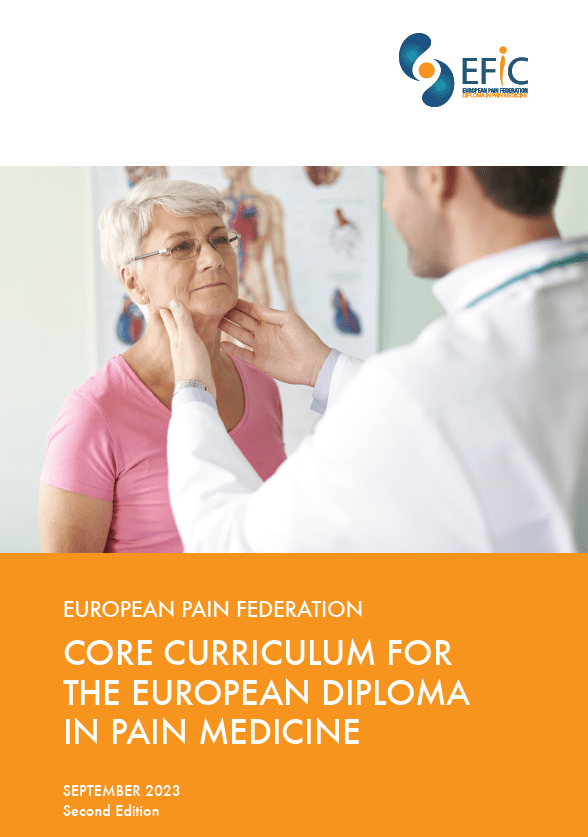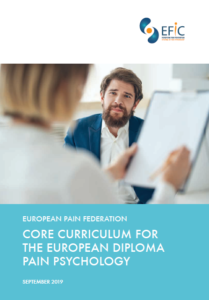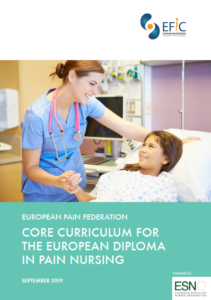Pain Curricula
EFIC have an interprofessional approach to pain education, recognising the role played by all healthcare professionals in pain management. To date, EFIC have developed curricula on pain medicine, pain physiotherapy, pain nursing, and pain psychology. These curricula form the basis of each of our educational projects. Please note: Previous versions of our curricula are available upon request.
- EFIC® Core Curriculum for the European Diploma in Pain Medicine
- EFIC® Core Curriculum for the European Diploma in Pain Psychology
- EFIC® Core Curriculum for the European Diploma in Pain Physiotherapy
- EFIC® Core Curriculum for the European Diploma in Pain Nursing
- EFIC® Pain Managment Core Curriculum for Medical Students
- EFIC® Core Curriculum for Bachelor / Pre-Registration Physiotherapy Programmes
Please find the Core Curriculum for the European Diploma in Pain Medicine here.
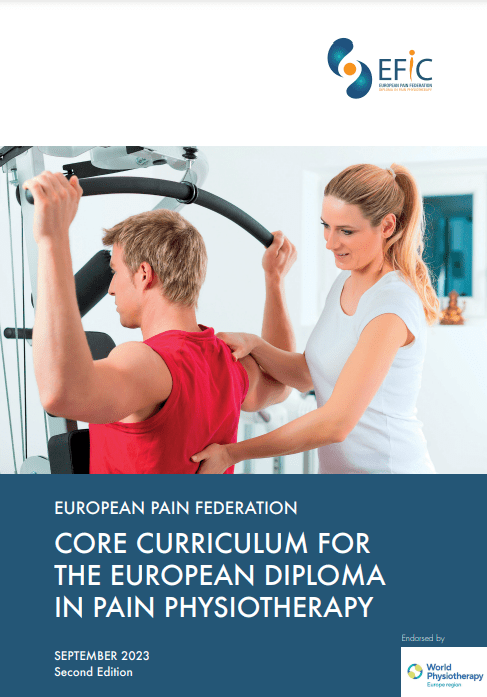 Please find the current Core Curriculum for the European Diploma in Pain Physiotherapy here.
Please find the current Core Curriculum for the European Diploma in Pain Physiotherapy here.
Please find the accompanying reading list here.
Please note: For the EDPP exam in 2024, the previous version of the Core Curriculum will be used. It can be found in the EDPP exam page here. From 2025 onwards, the current Core Curriculum published in September 2023 will be used for the EDPP exam.
Please find the Core Curriculum for the European Diploma in Pain Nursing here.
Please click here to download the complete European Pain Federation EFIC® Core Curriculum for Medical Students.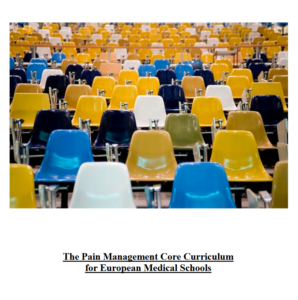
Please find the Co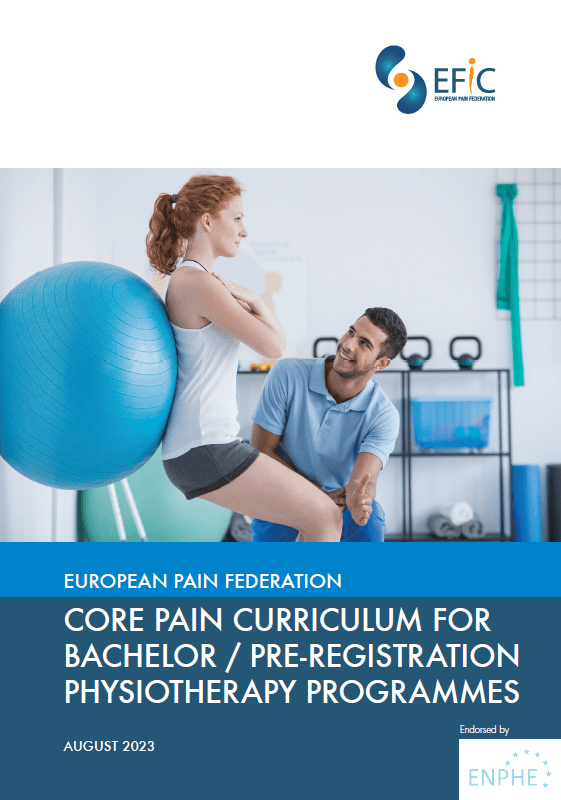 re Curriculum for Bachelor / Pre-Registration Physiotherapy Programmes here.
re Curriculum for Bachelor / Pre-Registration Physiotherapy Programmes here.
Please find translated versions of the Core Curriculum here:
Danish Translation
Italian Translation
Spanish Translation
Romanian Translation
Portuguese Translation
Lithuanian Translation
Slovenian Translation
Dutch Translation
Finnish Translation
